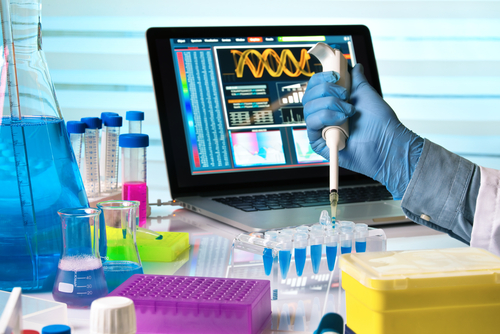Gene Alterations Linked to Charcot-Marie-Tooth Are Common Among Koreans, Study Reports
Written by |

One in every 5,943 Koreans has deletions in material that is part of the PMP22 gene linked to Charcot-Marie-Tooth disease type 1A (CMT1A), researchers estimate.
A team led by scientists at the Samsung Medical Center in South Korea, in collaboration with LabGenomics, conducted a genetic study of the PMP22 gene in Korean newborns.
The findings were reported in an article titled “Frequency of hereditary neuropathy with liability to pressure palsies (HNPP) due to 17p11.2 deletion in a Korean newborn population.” It was published in the Orphanet Journal of Rare Diseases.
DNA samples from 11,885 newborns were collected and analyzed with next-generation sequencing (NGS). The analysis detected deletions and duplications of PMP22 coding sequences.
The team identified seven samples with deletions of genetic content affecting the 17p11.2 chromosome — which includes the PMP22 gene — and two cases of PMP22 gene duplication leading to CMT1A.
The deletion is known to cause 80 to 90 percent of cases of hereditary neuropathy with liability to pressure palsies (HNPP). The disease is characterized by peripheral nerve cell damage, commonly affecting a single nerve that is sensitive to pressure.
Patients with HNPP experience recurrent episodes of numbness, tingling, and loss of muscle function in the region controlled by the nerve. The condition can remain asymptomatic during the first two to three decades of life. When it occurs, it frequently affects an arm, hand, leg, or foot.
The chromosome deletion samples were from unrelated families with a history of HNPP. Supported by this finding, the researchers estimated that the prevalence of PMP22 deletion-associated HNPP was 58.9 per 100,000 Koreans. The result suggested that HNPP prevalence in Korea is three to 70 times higher than reported in other countries or regions.
“The difference between previous studies and our study is that we performed the tests on neonates [newborns] before the onset of symptoms,” the researchers wrote.
As for PMP22 gene duplication, the team reported an estimated prevalence of 16.8 per 100,000 in this population, which is similar to previous reports. But they noted that the prevalence of PMP22 duplication can be underestimated.
The underestimation is likely because “a significant proportion of parents with PMP22 duplication already have CMT1A-related symptoms and may be more likely to request prenatal genetic diagnosis or preimplantation genetic diagnosis (PGD) rather than neonatal screening,” the team wrote.
“Our data suggest that PMP22 deletion [associated with] HNPP might not be uncommon, at least in the Korean population,” they concluded.




